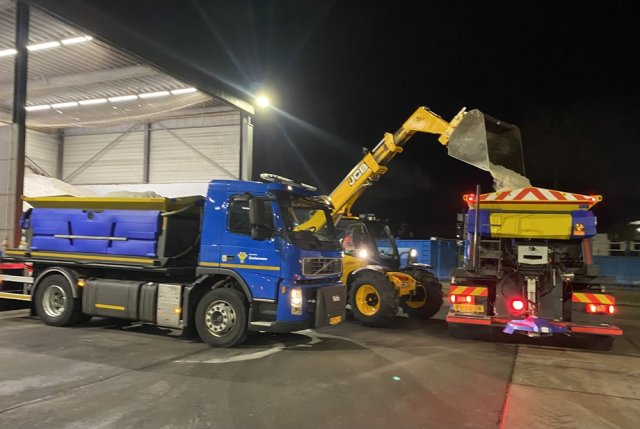Slipperiness and gritting
In the event of (imminent) ice, frost, snow or sleet, the gritting team comes out to keep roads passable. On this page you can read more about where we grit and what you can do yourself.
When will there be gritting?
Based on weather information, contact with a meteorologist (in some cases) and our own observations, we determine whether gritting is necessary. In the menu below you can see at what time gritting was done and which route was driven.
Gritting routes
There are 2 routes for ice control. Which route is driven depends on many different aspects, such as frost, humidity and cloudiness.
Limited route
When the limited route is gritted, the route passes main roads, major thoroughfares, on- and off-ramps and critical points that freeze quickly. These include some bridges, overpasses and roads along water. We also call these the "coldspots.
Full route
In the full route, main roads, through roads, access roads from neighborhoods, driveways and exits, main bicycle paths and coldspots are gritted.
There is no gritting on footpaths, smaller bike paths and streets in residential areas. There are several reasons for this. For example, because the gritters cannot get everywhere and because there is limited time to grit. So always pay extra attention in these places when you go out on the road.
What can you do yourself?
When it snows, it is best to clear the sidewalk of snow. Remove the snow with a shovel and throw a small layer of road salt on the sidewalk or street. Together with your neighbors, this will keep your street safe and accessible. You can buy road salt and a snow shovel at one of our city's hardware stores.
Report unsafe situations
Has an unsafe situation arisen due to slipperiness? Please report it to us via the BuitenBeter app.
Helpful tips
- Leave home on time. This will prevent time constraints and dangerous situations.
- Keep in mind that some places may be extra slippery. For example, bridges, overpasses and places where the pavement changes.
- Scrape all your car windows thoroughly with an ice scraper. Also check that your headlights are free of snow and ice.
- Remove snow from the roof of your car. This way, it will not fall off while driving.
- Park your car in gear and don't use your handbrake. This way it can not freeze stuck.
- Beware of fast steering, fast acceleration and heavy braking.
- Slow down for turns and don't take them too fast.
- Wear shoes with treads.
- Remember that it can be slippery even though it has been gritted.

